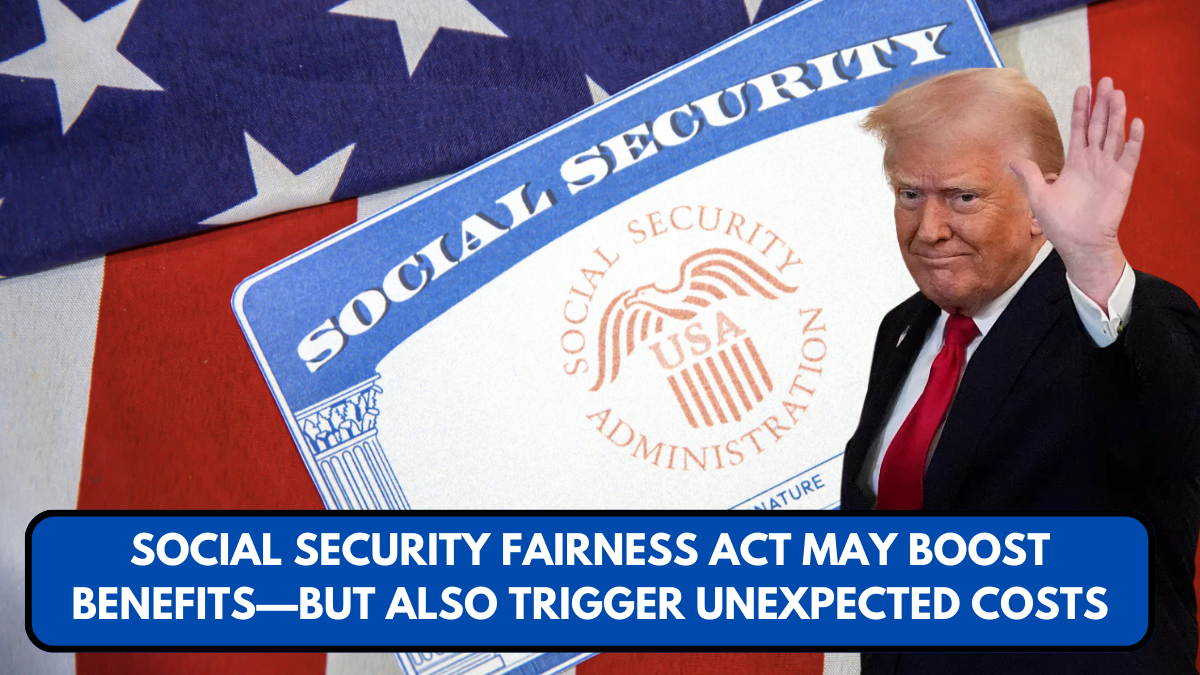Millions of retirees across the U.S. are set to receive a long-awaited boost to their Social Security benefits following the passage of the Social Security Fairness Act. While the law marks a major win for retired public servants, it may also come with a surprise price tag — not just for taxpayers, but potentially for the future of Social Security itself.
What Is the Social Security Fairness Act?
Signed into law by President Joe Biden in January 2025, the Social Security Fairness Act repeals two controversial provisions: the Windfall Elimination Provision (WEP) and the Government Pension Offset (GPO). These rules have long reduced Social Security benefits for public employees who receive pensions from non-covered government jobs — particularly impacting teachers, police officers, firefighters, and municipal workers.
With these provisions now repealed, over 3 million retirees stand to benefit from higher monthly payments.
“This is about fairness,” President Biden said during the signing ceremony. “Public servants who worked hard and paid into the system should not be penalized.”
How Much Are the Increases?

According to the Social Security Administration (SSA), the average benefit increase will be around $360 per month, with some retirees potentially seeing boosts of up to $1,190 monthly by December 2025.
Additionally, the law mandates retroactive payments dating back to January 2024, with average lump-sum payouts estimated at $6,710 per person. These retroactive payments are expected to begin rolling out later this year.
More information on benefit calculations can be found on the official SSA website.
But There’s a Catch — Or Several
While the Act offers long-awaited relief, it also raises fiscal red flags and could lead to unforeseen consequences for some beneficiaries and the broader Social Security system.
1. Long Delays Ahead
Despite the law’s passage, many retirees may need to wait more than a year before seeing their payments increase.
The SSA, already burdened by staffing shortages and outdated systems, has acknowledged that processing the changes will take time. Officials estimate that full implementation, including eligibility verifications and payment adjustments, could stretch into mid-to-late 2026.
“We are working as fast as we can,” said an SSA spokesperson. “But with over 3 million affected, this is a heavy administrative lift.”
2. Hefty Price Tag for Taxpayers
According to the Congressional Budget Office (CBO), the Act will cost the federal government an estimated $196 billion over the next decade.
You can read the full cost analysis on the CBO’s official site.
Critics, including fiscal watchdogs and some lawmakers, warn that the legislation was passed without adequate planning for how to offset the new spending.
3. A Threat to Social Security’s Solvency
Perhaps the most concerning outcome is the potential impact on the Social Security Trust Fund. The CBO estimates that this new law will accelerate the trust fund’s insolvency by roughly six months, moving the projected depletion date closer to 2035.
Without further reforms, that could eventually lead to automatic benefit cuts for all Social Security recipients, not just those impacted by the WEP and GPO.
More information on the program’s funding status can be found on the SSA’s Trust Fund FAQ.
Who Benefits Most?
Supporters of the Act argue that it’s a long-overdue correction of unfair benefit reductions. The WEP and GPO often left public sector retirees with significantly reduced Social Security checks — even after decades of paying into the system through other jobs.
However, some analysts argue that higher-income public retirees may benefit disproportionately under the new law, potentially deepening inequities within the system.
In a Cato Institute analysis, experts suggest that a more targeted reform — one that adjusts WEP/GPO formulas instead of eliminating them entirely — would have been more fiscally responsible.
Could There Be Another Way?

Alternatives to a full repeal of WEP and GPO have long been debated. One such option is to revise the WEP formula to better reflect a worker’s lifetime earnings, rather than eliminating it outright.
Organizations like the National Taxpayers Union have argued for more balanced reform proposals that reduce unintended consequences. You can explore their breakdown here.
Final Thoughts
The Social Security Fairness Act represents a major policy shift that rectifies perceived injustices for millions of public service retirees. Yet, it comes with a cost — both fiscal and administrative — that could ripple through the entire Social Security system.
As retirees wait for their payments and the government works through implementation challenges, the spotlight is once again on America’s aging safety net — and the urgent need to ensure its long-term solvency.

Outside of work, he enjoys playing chess, following cricket, and writing short stories. His commitment to integrity and in-depth analysis strengthens OTE News’ mission of providing trustworthy journalism.




